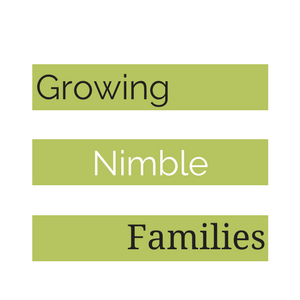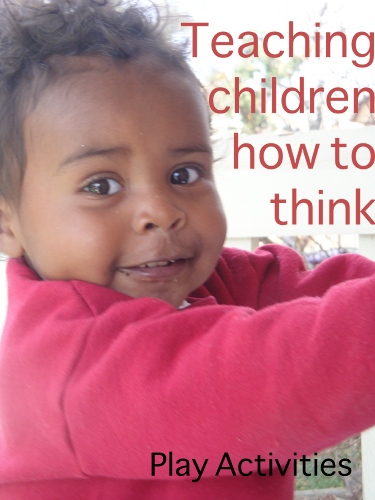Can you [tag]teach[/tag] [tag]young children[/tag] to [tag]think[/tag]?
Now here’s a different play-activity to try.
The National Foundation for Educational Research found the central role in teaching a young child to think is through ‘..[tag]dialogue[/tag], [tag]questioning[/tag], [tag]stories[/tag] and [tag]play[/tag]….’
Teaching [tag]thinking skills[/tag] is in the [tag]National Curriculum[/tag] and has been since 1999 but no systematic study of how to teach effectively until this study.
The [tag]early years[/tag] from preschool on up through to early schooling the primary focus on improving how children think is through dialogue- asking questions etc so the teachers are doing well.
My son’s [tag]preschool[/tag] sends home information on what he’s been doing at school. One of the sessions said “…participated in a group session on ‘how to invite a friend to play’ dialogue?”
It’s easier at school to set up special moments like this; perhaps this was a discrete part of the curriculum or something that came up that the teacher knew needed addressing. ( Children feeling left out?, new children in the class? Particularly bad session with children excluding others? who knows?)
But how does that translate to the parents of those 3 year olds. How do we encourage the beginning of thinking skills?
Try introducing thinking language E.g. ˜think, ˜know, ˜guess and ˜remember’
- Use questions like “How do you know?”
- “Why?”
- “What might have happened if…? ( you had picked up the lego when you’d finished?- I could have played the puzzle with you. ) Past idea
or
- “What would have happened if..? ( you had run into the road.) Past idea
- What can you do if you spill your juice? ( I can clean up with a paper towel) Future idea
- Build in fun thinking times when your child knows it’s not real but thinking time. I tried it on the walk to the park today.
- Use story times to talk about the character using thinking language.
Note: the research says that by the age of seven children can use the above thinking language. There wasn’t the expectation they could do these ideas at three this is where the thinking skills process starts, during the preschool years.
For further information………
Thinking skills in the early years
– this is a pdf document.
Page 40 gives and excellent example of appropriate questioning techniques to use with a story.
Helping toddlers become problem solvers
An excellent article excerpted from “Using Everyday Materials to Promote Problem Solving in Toddlers” by Laura Segatti, Judy Brown-DuPaul, and Tracy L. Keyes – an article in the NAEYC journal, Young Children.
Thinking skills in the early years
-Inovative project between parents/guardians and the school to develop the quality of questioning being used at home with the children.
Visit the downloadable pdf activities page for a list of books and great question ideas produced by this collaboration.
List of articles on thinking skills produced by the National Association for the Education of Young Children












Great post; parents should be doing this at home, for sure! Teaching children how to think is primarily the job of the parents, and natural opportunities abound in the home for doing this!
Thanks for your comment Jennifer.
Thinking language is so easy to use during everyday conversation we just need to be aware of it and use it. Hopefully more people will try it and see.
Great resources.
I’m late getting around to visit all of the Carnival participants. (Crazy week . . . only excuse!)
THANK YOU for hosting Colloquium’s inaugural edition. I appreciate your support and hard work.
Don’t forget that this week’s Carnival will be hosted at All Rileyed Up. If you haven’t submitted a post yet, you can do so until midnight (Pacific Time) tonight!
Hi!
Thanks for stopping by! You have a great blog here – lots of interesting ideas I can see.
Thank you 🙂